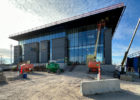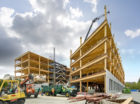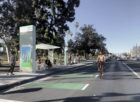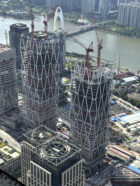2023 will bring major milestones to celebrate around the globe, from a groundbreaking in Berkeley to an airport opening in Bengaluru. This year’s list of upcoming project highlights is characteristically varied, yet it highlights some of the values and threads of inquiry that underpin our work: a commitment to strengthening cities and communities through equitable urban design; developing new design and engineering strategies to reduce the carbon impact of construction; and prioritizing human health and well-being.
The coming year will see completions big and small—including a superlative tower in Gothenburg that anchors a broader urban regeneration, and the deployment of public bus shelters across high-need neighborhoods in Los Angeles. In India, a uniquely verdant airport terminal will welcome its first commercial passengers. Other exciting work is just beginning to be visible, with groundbreaking scheduled for the adaptive reuse and expansion of a historic hotel in Melbourne, among others.
These projects demonstrate solutions to reduce both operational and embodied carbon emissions, from a new civic building in California that serves as a model for mass timber construction, to a community-driven project in Chicago designed to achieve net-zero whole-life carbon. A focus on health and well-being is likewise a common thread , linking such diverse designs as a singular workplace in Shenzhen and a hospital in Atlanta that introduces a new model for patient care.
These, of course, are just the highlights. We are excited about all that the year ahead will bring!


















